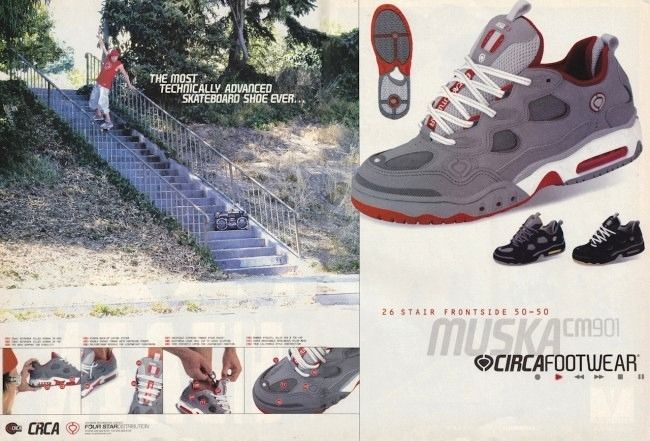:format(webp))
Sneaker Evolution: How a Hidden Pocket Transformed Skateboarding Footwear
Chad Muska, an iconic skateboarder, collaborated with éS in 1997 to create a unique sneaker with a concealed pocket, initially intended for hiding weed. This daring design would go on to shape the sneaker industry.
Muska's skateboarding journey began in Las Vegas and Phoenix but led him to San Diego's Mission Beach, where he rose to prominence. His first and only éS signature model featured a hidden pocket tucked behind the tongue, making it ideal for stashing weed, among other things.

The skateboarding industry was evolving, with skate shoes adopting design elements from athletic footwear, and signature shoe models becoming more common. Muska's shoe, partly inspired by the Air Jordan IV, featured a mesh upper and a distinctive heel tab, but it was the pocket—a four-and-a-quarter-inch compartment with Velcro closure—that set it apart.
Franck Boistel, the shoe's designer, aimed to create a durable shoe, incorporating rubber extensively to withstand Muska's aggressive skating style. While Muska and Boistel had differing accounts of the pocket's development, it resonated with consumers who appreciated its discreet utility.

The hidden pocket received attention from law enforcement, with stories of police stopping skaters to inspect their footwear. Schools even warned teachers about the shoe and its potential for concealment.
Despite these challenges, the skateboarding industry recognized the potential of footwear as a lucrative market. Muska's shoe, with a wholesale price between $52 and $55, became the first skateboarding shoe to surpass the $100 retail mark and quickly sold out.
Competitors soon followed, introducing their own hidden stash spots. Osiris released a model with a similar feature, and Muska extended the concept to a Shorty's bag designed to hold a 40-ounce beer bottle.
Skateboarding was thriving, and skate shops successfully sold high-priced sneakers and backpacks. Muska eventually left éS to start his brand, Circa, in 1999, where he continued to incorporate hidden stash spots in his designs.
Over time, skate shoes evolved, transitioning to streamlined, vulcanized silhouettes. The hidden pocket concept persisted, making appearances in various sneaker collaborations, including Nike's SB models and Adidas and Bait's Stan Smith Vulc "Happy" collaboration.
Today, the hidden stash spot is no longer a prominent trend in skateboarding footwear. Muska believes that concealed compartments and airbags no longer represent the technological innovations they once did.
The hidden pocket in skateboarding footwear, initially intended for weed and other concealed items, became a significant trendsetter in the sneaker industry. While it may no longer dominate the market, its legacy endures as a testament to the creativity and innovation within skateboarding and sneaker culture.
:format(webp))